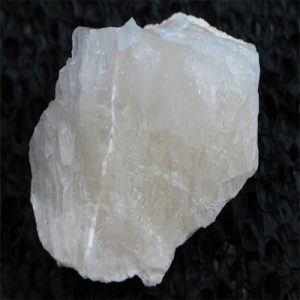Suolunite
Sunstone is a member of the Feldspar Group of minerals that also includes Albite, Amazonite, Andesine, Anorthite, Bytownite, Hyalophane, Labradorite, Moonstone, Oligoclase, Orthoclase, Sanidine and Sunstone. Sunstone from Oregon is actually Labradorite with microscopic particles of copper suspended in the host material that create a Schiller effect. This effect is the reflection of light off the partcles of suspended copper. Oregon Sunstone is available in colors of light champagne, yellow, orange, red and green. Some gems may be bi-colored with red and green. This variation of color is due to the presence of copper and lead in the composition. Another type of Sunstone exists. This other Sunstone is an Oligoclase and typically has inclusions of hematite or pyrite instead of copper and is abundant as cabochons from India. Sunstone gets its name from the bright, flashy Schiller effect. The name Feldspar is from the Swedish feldt + spat meaning that it was found in fields overlying granite.
| Chemical Formula: | Ca2[H2Si2O7] · H2O |
| Crystallography: | Orthorhombic – Pyramidal |
| Crystal Habit: | As coarse-bladed crystals, to 3 mm, in stellate aggregates; fine-granular massive |
| Twinning: | None |
| Cleavage: | None |
| Fracture: | n/a |
| Tenacity: | Brittle |
| Moh’s Hardness: | 3.5 |
| Density: | 2.63 – 2.68 (g/cm3) |
| Luminescence: | None |
| Radioactivity: | Not Radioactive |
| Other: | Distinctly piezoelectric |
| Color: | Colorless, White, Cream, Honey Yellow |
| Transparency: | Transparent to Translucent |
| Luster: | Vitreous to Resinous, Waxy |
| Refractive Index: | 1.610 – 1.623 Biaxial ( – ) |
| Birefringence: | 0.0130 |
| Dispersion: | Relatively Strong |
| Pleochroism: | None |


